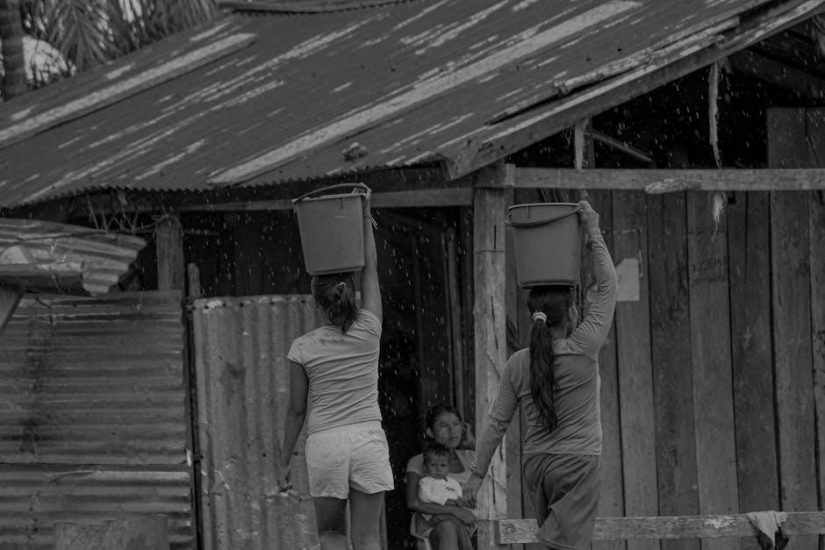Understanding Poverty in America
Poverty in America is a complex issue defined by economic deprivation and limited access to resources. The U.S. Census Bureau measures poverty using the Official Poverty Measure (OPM) and the Supplemental Poverty Measure (SPM), which provide insights into economic disparities and guide anti-poverty initiatives.

1.1 Definition of Poverty and Its Measures
Poverty is defined as economic deprivation, where individuals lack sufficient income to meet basic needs. The U.S. Census Bureau measures poverty using income thresholds, adjusting for family size and inflation. The Official Poverty Measure (OPM) focuses on pre-tax cash income, while the Supplemental Poverty Measure (SPM) includes non-cash benefits and expenses like housing and healthcare, providing a broader understanding of economic hardship.
1.2 Official Poverty Measure (OPM) vs. Supplemental Poverty Measure (SPM)
The Official Poverty Measure (OPM) calculates poverty using pre-tax income and fixed thresholds, excluding non-cash benefits. In contrast, the Supplemental Poverty Measure (SPM) includes government assistance like SNAP and housing subsidies, offering a more comprehensive view of economic well-being. While the OPM provides a straightforward metric, the SPM reveals how anti-poverty programs impact poverty levels, often showing lower rates when benefits are considered.

Current Poverty Statistics in the United States
In 2022, the official poverty rate was 11.5%, impacting 37.9 million people, while the Supplemental Poverty Measure (SPM) reported a slightly higher rate of 12.4%.
2.1 Official Poverty Rate in 2022
The official poverty rate in 2022 was 11.5%, affecting 37.9 million people. This measure, defined by income thresholds adjusted for family size and inflation, reflects economic hardship. The U.S. Census Bureau reported this data, highlighting disparities and the need for targeted interventions to address systemic poverty and improve living conditions across the nation.
2.2 Supplemental Poverty Measure (SPM) in 2022

In 2022, the Supplemental Poverty Measure (SPM) was 12.4%, slightly higher than the official rate. The SPM accounts for additional factors like housing costs, utilities, and government assistance, offering a broader understanding of economic hardship. This measure highlights disparities missed by the OPM, emphasizing the need for comprehensive policies to address poverty’s multifaceted challenges across the U.S. population.
2.3 Historical Trends in Poverty Rates

Poverty rates in the U.S. have fluctuated over decades, reflecting economic conditions and policy changes. The rate fell to 14.5% in 2013 and further declined to 11.1% by 2019. COVID-19 impacted these trends, but overall, poverty rates have shown a gradual decline since the 1960s. However, challenges persist, particularly among vulnerable populations like children, where 16.2% lived in poverty in 2018, highlighting ongoing disparities.
Demographic Disparities in Poverty
Poverty disproportionately affects certain groups, with higher rates among racial minorities and children. Black individuals and children under 18 face significant disparities, highlighting systemic inequalities and economic challenges.
3.1 Racial and Ethnic Differences in Poverty Rates
Poverty rates vary significantly across racial and ethnic groups. According to the U.S. Census Bureau, Black individuals experience higher poverty rates compared to other groups. Data indicates that systemic inequalities and historical discrimination contribute to these disparities, affecting economic opportunities and access to resources for marginalized communities nationwide.
3.2 Poverty Among Children and the Elderly
Poverty disproportionately affects children and the elderly in America. According to the U.S. Census Bureau, 16.2% of children (11.9 million) lived in poverty in 2018. The elderly, however, have seen lower poverty rates due to programs like Social Security. These disparities highlight the need for targeted interventions to support vulnerable populations and address systemic challenges faced by these groups.
3.3 Regional Variations in Poverty
Poverty rates vary significantly across regions in the U.S. Southern and Southwestern states often exhibit higher poverty levels compared to the Northeast and Midwest. Data from the U.S. Census Bureau shows specific areas with concentrated poverty, highlighting the impact of local economic conditions, employment opportunities, and access to resources on regional disparities. These variations underscore the need for tailored solutions to address location-specific challenges.

Causes of Poverty in America
Economic inequality, lack of education, and systemic discrimination are key drivers of poverty in America, as highlighted by U.S. Census Bureau reports and research studies.
4.1 Economic Factors Contributing to Poverty
The official poverty rate in 2022 was 11.5%, affecting 37.9 million people. Economic inequality, wage stagnation, and limited job opportunities exacerbate poverty. U.S. Census Bureau data highlights how these factors disproportionately impact marginalized groups, perpetuating systemic disparities and hindering economic mobility for vulnerable populations.
4.2 Role of Education and Skill Levels
Education and skill levels significantly influence poverty rates. Individuals with lower educational attainment often face limited job opportunities and lower wages. According to U.S. Census Bureau data, those without a high school diploma are more likely to live in poverty. Conversely, higher education and skill development can enhance employability, reducing poverty risks and fostering economic mobility.
4.3 Impact of Discrimination and Systemic Inequalities
Discrimination and systemic inequalities significantly contribute to poverty in America. Racial and ethnic disparities, as highlighted by U.S. Census Bureau data, show higher poverty rates among marginalized groups. Structural barriers, such as limited access to quality education and employment, perpetuate economic inequality. Addressing these systemic issues is crucial to reducing poverty and achieving equitable opportunities for all populations.
Effects of Poverty on Society
Poverty strains economic growth, weakens social structures, and erodes cultural fabric. It fosters inequality, limits opportunities, and creates cycles of deprivation, impacting societal stability and progress.
5.1 Health Impacts of Poverty
Poverty significantly affects health outcomes, leading to higher rates of chronic diseases, mental health issues, and reduced life expectancy. Limited access to nutritious food, healthcare, and safe living conditions exacerbate these challenges. Poor communities often experience higher infant mortality rates and lower vaccination rates, perpetuating cycles of ill health and societal burden.
5.2 Economic Consequences for the Nation
Poverty imposes significant economic burdens, reducing productivity and increasing public costs. Lower consumer spending, reduced tax revenues, and higher healthcare expenses strain the economy. Additionally, poverty perpetuates cycles of inequality, limiting human potential and economic growth. Addressing poverty is crucial for fostering a robust and sustainable national economy.
5.3 Social and Cultural Implications
Poverty fosters social divisions, eroding community cohesion and perpetuating stereotypes. It limits access to education and cultural opportunities, hindering social mobility. Marginalized groups often face stigma, reinforcing cycles of exclusion. Addressing these disparities is essential for building an inclusive society where all individuals can thrive and contribute meaningfully to cultural and social development.
Government Efforts to Address Poverty
The U.S. government implements federal programs like SNAP and Medicaid to alleviate poverty. These initiatives aim to provide essential support, reducing economic hardship and improving quality of life.
6.1 Federal Assistance Programs
Federal assistance programs play a crucial role in addressing poverty. Initiatives like SNAP (Supplemental Nutrition Assistance Program) and Medicaid provide essential support to low-income individuals. These programs aim to ensure access to basic needs such as food and healthcare, helping millions of Americans each year. Additionally, programs like Temporary Assistance for Needy Families (TANF) offer financial support and job training to families in need, promoting self-sufficiency and economic mobility. These efforts are vital in reducing poverty and improving overall well-being across the nation.
6.2 State and Local Initiatives
State and local governments implement tailored programs to combat poverty, often addressing specific community needs. These initiatives include job training, affordable housing, and education support. For example, some states expand Medicaid eligibility, while others fund local non-profits. Cities also launch community development projects, fostering economic growth and social services. Such efforts complement federal programs, ensuring a multi-layered approach to poverty reduction and community empowerment.
6.4 The Role of Non-Profit Organizations

Non-profit organizations play a vital role in addressing poverty by providing direct services and advocating for systemic change. They offer food assistance, housing support, and educational programs. Many partner with governments to amplify their impact. Non-profits also raise awareness and mobilize communities, ensuring that marginalized voices are heard. Their efforts are crucial in filling gaps left by federal and state initiatives, fostering resilience and hope among those in need.

Solutions and Strategies to Reduce Poverty
Policy reforms, community-based initiatives, and public-private partnerships are key strategies to reduce poverty. These approaches address systemic issues, improve access to resources, and empower marginalized communities.
7.1 Policy Reforms and Legislative Actions
Effective policy reforms and legislative actions are crucial to addressing poverty. These include updating poverty thresholds, expanding access to healthcare, and improving education funding. Measures like increasing the minimum wage, enhancing tax credits, and strengthening social safety nets can significantly reduce economic disparities. Such reforms ensure sustainable progress in combating poverty and fostering equitable opportunities for all Americans.
7.2 Community-Based Approaches
Community-based initiatives are vital in addressing poverty at the grassroots level. Local organizations often implement targeted programs, such as job training, food distribution, and educational workshops. These efforts empower individuals and foster self-sufficiency. By engaging residents and leveraging local resources, community-based approaches create sustainable solutions tailored to specific needs, enhancing overall well-being and resilience within disadvantaged neighborhoods.
7.3 The Importance of Public-Private Partnerships
Public-private partnerships are crucial in combating poverty by pooling resources and expertise. These collaborations between government agencies, businesses, and nonprofits amplify aid distribution and create sustainable solutions. By leveraging private-sector innovation and funding, such partnerships can address systemic issues like unemployment and lack of access to education or healthcare, fostering economic growth and reducing poverty more effectively than isolated efforts.
Poverty remains a persistent challenge in America, with 11.5% living below the poverty line in 2022. Addressing it requires comprehensive solutions and continued efforts to ensure equitable opportunities for all.
8.1 Summary of Key Findings
Poverty in America affects millions, with the 2022 official rate at 11.5% and 37.9 million people in poverty. The Supplemental Poverty Measure (SPM) showed 12.4%, highlighting economic disparities. Racial and ethnic groups, children, and regional areas face higher rates, emphasizing systemic inequalities. Understanding these disparities is crucial for developing targeted solutions to address poverty effectively and promote equitable opportunities nationwide.
8.2 The Path Forward in Addressing Poverty
Addressing poverty requires a multifaceted approach, including policy reforms, education, and job training. Expanding access to affordable housing, healthcare, and nutrition programs can alleviate immediate hardships. Strengthening social safety nets and fostering public-private partnerships are essential. By addressing systemic inequalities and investing in communities, the U.S. can create sustainable pathways to prosperity and reduce poverty effectively.
